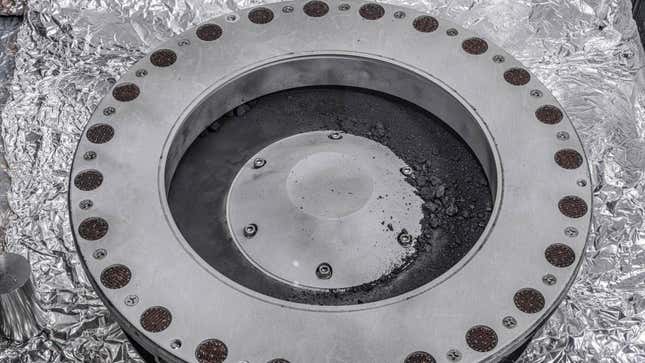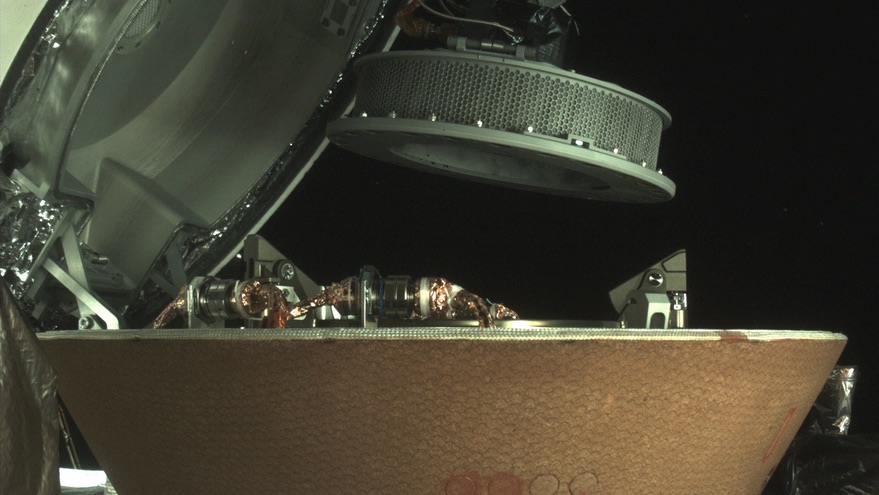“After multiple attempts at removal, the team discovered two of the 35 fasteners on the TAGSAM head could not be removed with the current tools approved for use in the OSIRIS-REx glovebox,” NASA wrote in a blog post on Friday.
“The team has been working to develop and implement new approaches to extract the material inside the head, while continuing to keep the sample safe and pristine.”
When the aluminum lid to the sample canister was first removed, the mission team found black dust and debris on the avionics deck of the canister. On October 11, NASA revealed the first look at the samples collected from the outside of the TAGSAM head while adding that it still hasn’t opened the sample canister yet. “The only problem is a great problem and that’s we’ve found a lot more sample than we’re anticipating before even getting into the TAGSAM,” Francis McCubbin, curator at NASA’s JSC, said during a live event.
As it turns out, there’s also a not-so-good problem. So far, the curation team has managed to remove some of the material from inside the canister with tweezers or a scoop while holding down the TAGSAM head’s mylar flap. Over the next few weeks, the team will try to come up with new ways to extract the rest of the sample.
When the aluminum lid to the sample canister was first removed, the mission team found black dust and debris on the avionics deck of the canister. On October 11, NASA revealed the first look at the samples collected from the outside of the TAGSAM head while adding that it still hasn’t opened the sample canister yet. “The only problem is a great problem and that’s we’ve found a lot more sample than we’re anticipating before even getting into the TAGSAM,” Francis McCubbin, curator at NASA’s JSC, said during a live event.
As it turns out, there’s also a not-so-good problem. So far, the curation team has managed to remove some of the material from inside the canister with tweezers or a scoop while holding down the TAGSAM head’s mylar flap. Over the next few weeks, the team will try to come up with new ways to extract the rest of the sample.
NASA Is Struggling to Open Its Asteroid Sample Container
Scientists have collected rock and dust from outside the canister, but the bulk of the sample remains stuck inside.
About a month ago, pristine samples from an asteroid landed on Earth while enclosed within a tight capsule. The sample canister was designed to keep the main chunk of the asteroid safe during its journey through space, but now teams at NASA’s Johnson Space Center (JSC) are struggling to open it to get at the space rocks. . ."
NASA finally opened the space capsule containing the largest asteroid sample ever collected by a space mission. The sample came from Bennu, a potentially hazardous asteroid that's like a time capsule ...







No comments:
Post a Comment